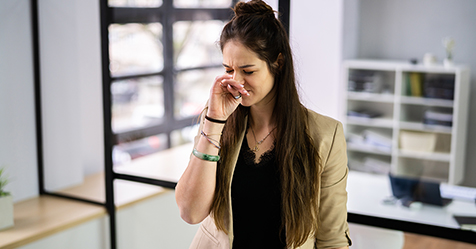It’s been said, “a better doctor helps before disease begins, and the lesser one after the disease has developed.”
It’s also been said, “a better cleaning professional helps prevent illnesses, while the lesser one applies higher cleaning standards only after people get sick.”
Waiting to improve cleaning until after the building and its occupants are “sick” is putting the cart before the horse.
It’s easy to see which approach is better — to clean preventively before people get sick or reactively after they do — but just exactly how can we practice a form of “preventative medicine” in our cleaning?
The answer starts in developing and promoting a higher standard of care, and perhaps by taking “The Green Hippocratic Oath.”
The Green Hippocratic Oath: First, Do No Harm To The Indoor Environment
If it’s important for a doctor to know why he or she decided to practice medicine, it’s also important that we know why we clean.
Ideally, just as a doctor wants to First, Do No Harm to the patient, we should clean to First, Do No Harm to the indoor environment by promoting Health Intentional Cleaning (HIC) in the context of a cost effective and profitable operation.
As an example of a Green Hippocratic Oath to adopt, consider this one:
“As a facility professional, I formally support The Green Hippocratic Oath:
First, Do No Harm to the Environment
This involves a personal commitment to educate myself, teach others, lead with purpose, act with integrity, and — teaming with others — apply the reach, power, and responsibility of business to optimize indoor and outdoor environments for health.
My goal is to help make facilities clean, healthful, and productive environments, through understanding and applying the tools and techniques of Health Intentional Cleaning (HIC) …”
Treat The Whole Patient
As surely as a just-treat-symptoms approach is medically wrong (and sometimes deadly), it’s equally bad to only thoroughly clean buildings after people get sick.
The goal of facility cleaning should be to “Treat the Whole Patient” by striving to make the entire indoor environment clean and healthy as a Standard Operating Procedure (SOP).
This includes promoting:
- Handwashing (are enough sinks, soap/water and hand sanitizer available?)
- Entrance matting (how many steps do people take on matting before they enter your building? — the more the better)
- Ventilating (fresh air dilutes indoor pollutants — do you know the Air Changes per Hour (ACR) of your building?)
- Reducing chemical use (many are unnecessary, or less so, with the advent of better tools and processes)
- Measuring outcomes for continuous improvement using ISSA’s Clean Standard and IEHA’s Integrated Cleaning and Measurement (ICM).
ISSA’s Clean Standard using ATP (adenosine triphosphate) measurement helps by providing a target range for “clean” and a preventative standard of care in schools, based on the premise that less organic soil (or germ food) equals less microbial growth which equals (we hope) fewer contagious illnesses contracted from surfaces.
IEHA’s Integrated Cleaning and Measurement (ICM), also greatly helps as it promotes measurement of before and after cleaning conditions, with continual improvement, holistic thought, and linking health metrics as the total goal.
Diagnose Before Prescribing
ICM suggests using key diagnostic tools including ATP Meters, Particle Counters, RODAC plates, and other devices that can help diagnose the health of our buildings and cleaning through measured observation.
Become a Specialist, But Work as a Team
It is common and wise in the medical field for a doctor to cultivate a specialty, thus avoiding being a “jack-of-all-trades and master of none”. He or she then works with other specialists to form an effective team that is more than the sum of its parts.
In the cleaning field, individuals with a specialty are more productive and better at their jobs. Consider examples from specialist cleaning programs such as Process Cleaning for Healthy Schools and Team Cleaning.
Doctor’s Orders
If you adopt the steps above, your operation is more likely to receive a clean bill of health through the practice of Health Intentional Cleaning (HIC).
For more information on Health Intentional Cleaning (HIC), visit https://www.healthintentionalcleaning.org.
This special online series and its articles are sponsored by Advanced Vapor Technologies, LLC.
Health Intentional Cleaning (HIC)® is a registered trademark of Advanced Vapor Technologies. Other trademarks (often capitalized above) are the registered marks of their owners.


